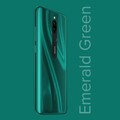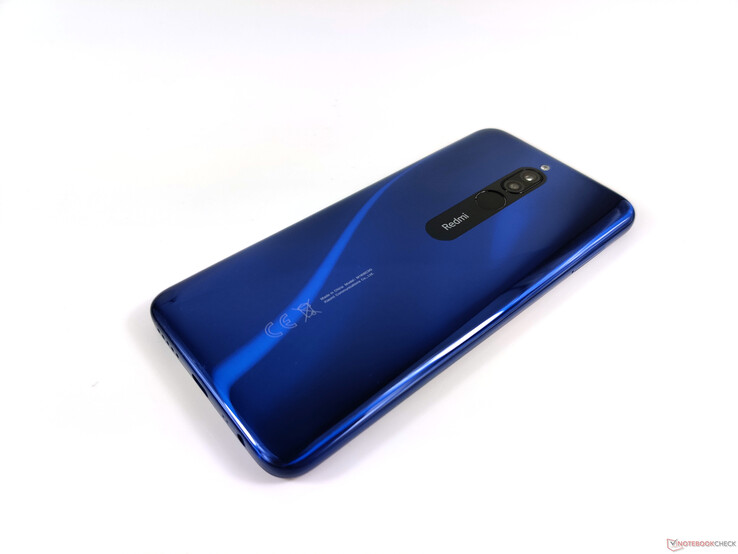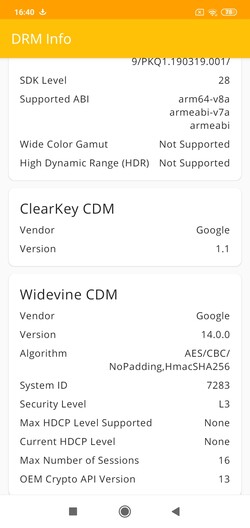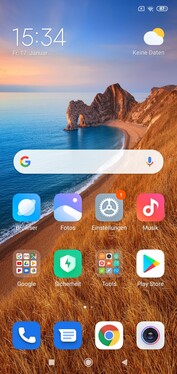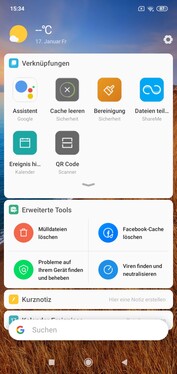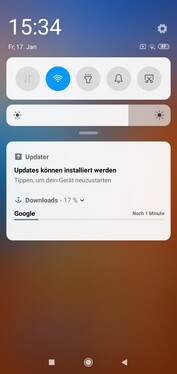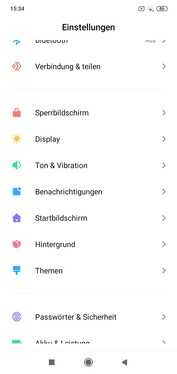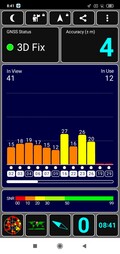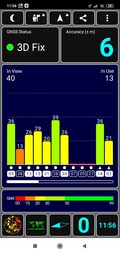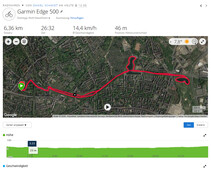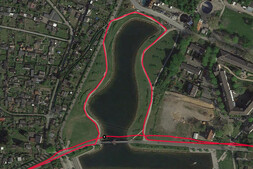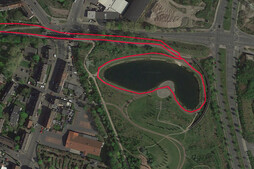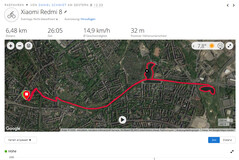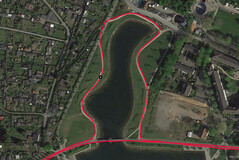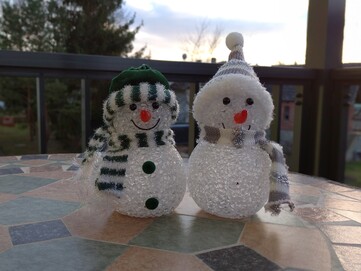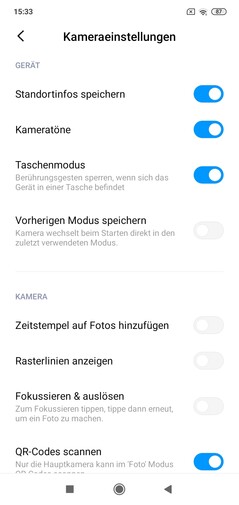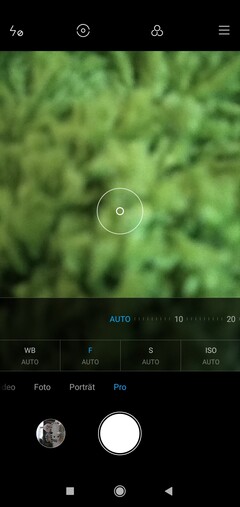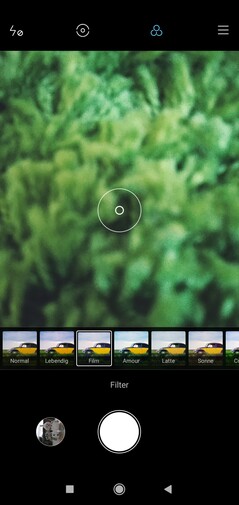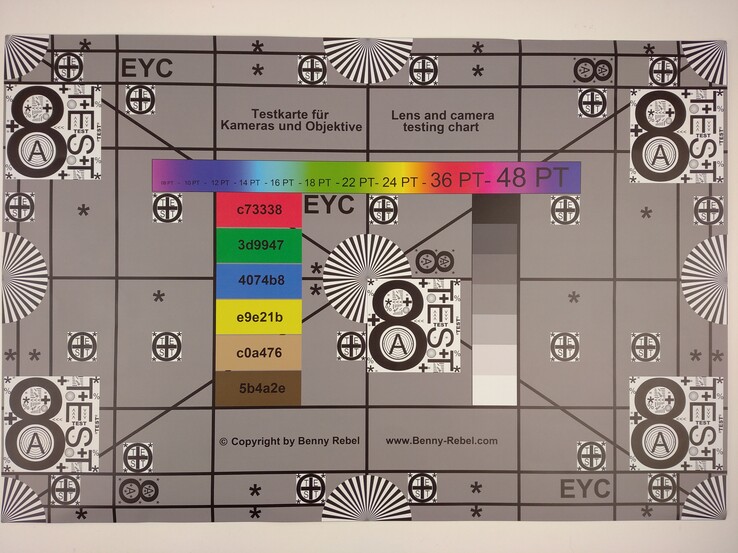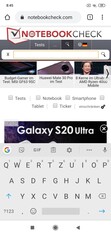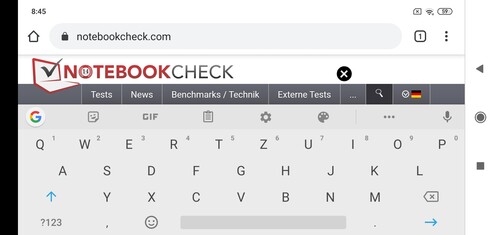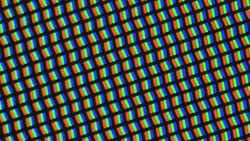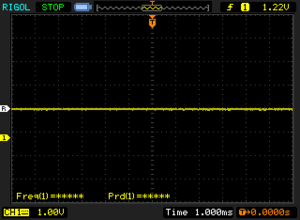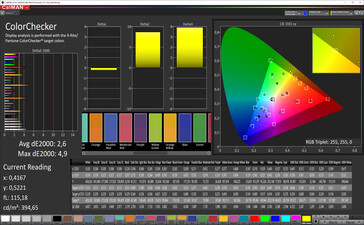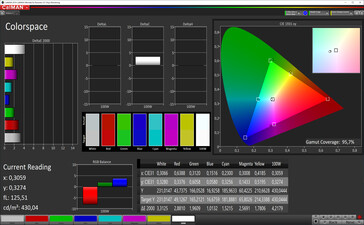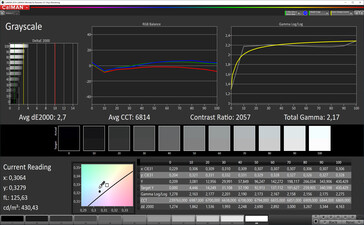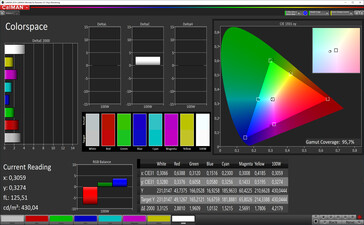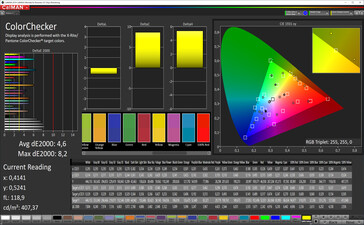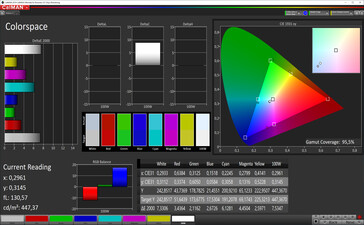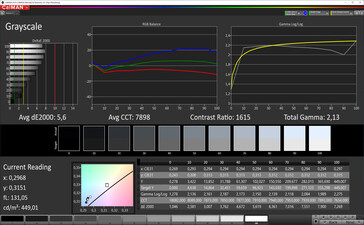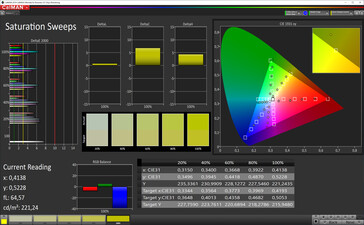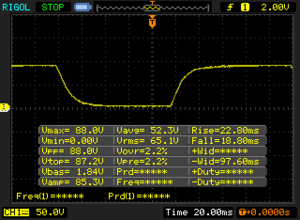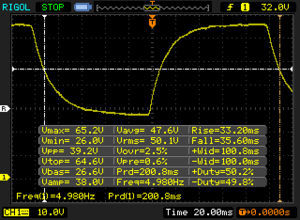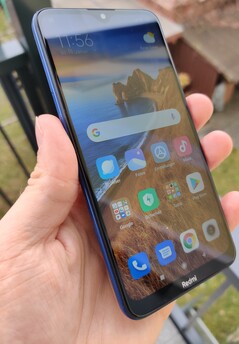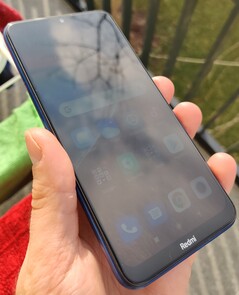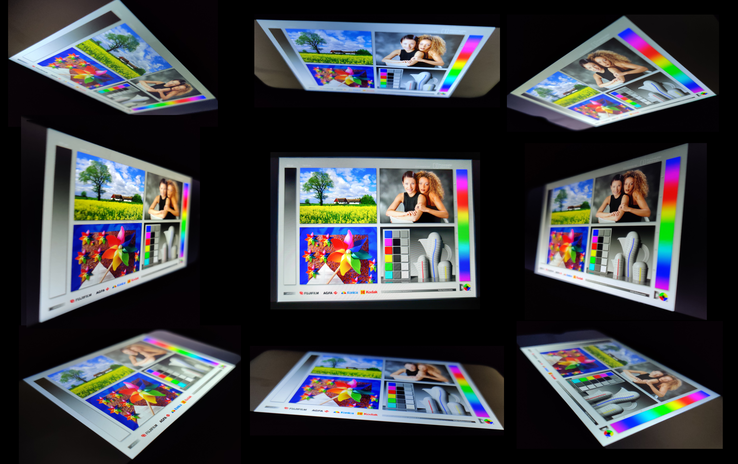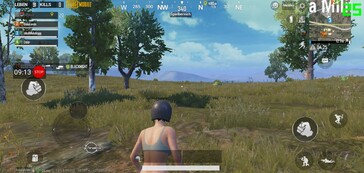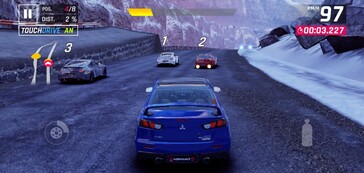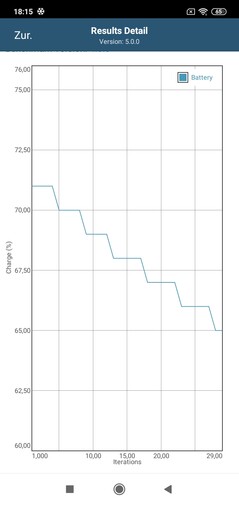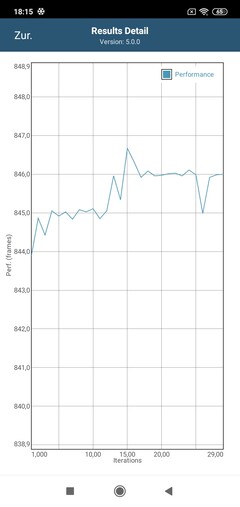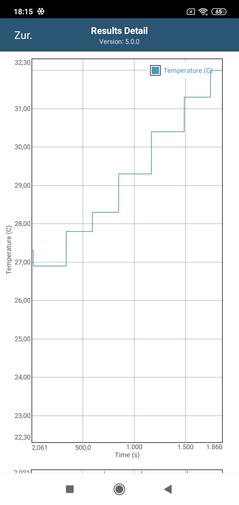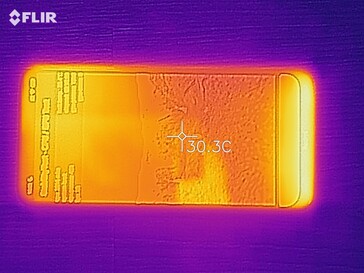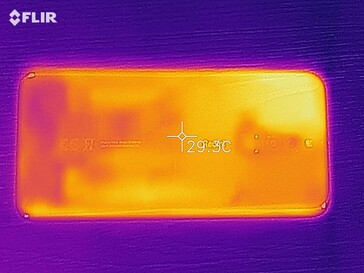Xiaomi Redmi 8 Smartphone Review: Xiaomi's budget phone sets new standards
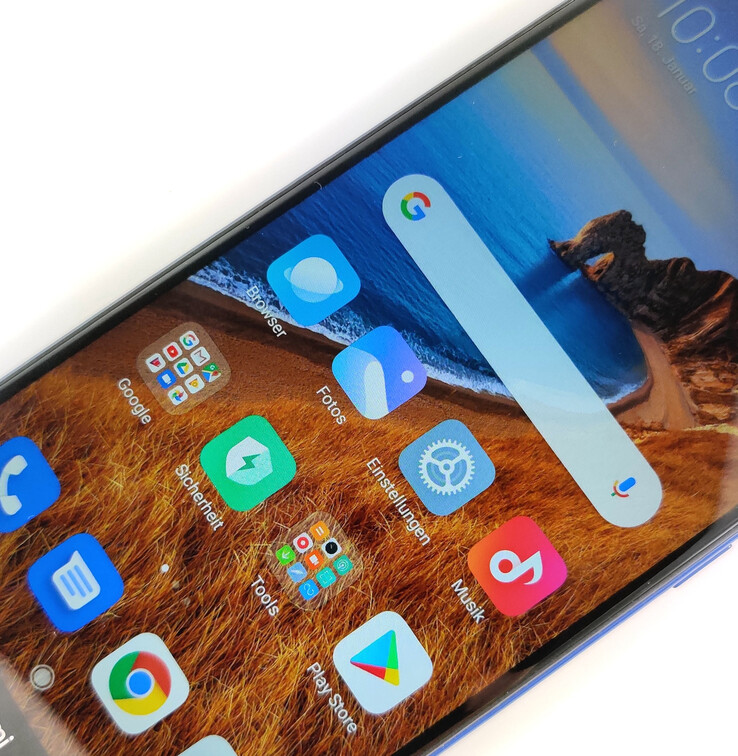
With the Redmi 8, Xiaomi particularly wants to appeal to price-conscious buyers. The device starts at around 115 Euros (~$127) for the 32 GB of storage and 3 GB of RAM model, with the 64 GB and 4 GB costing an additional 20 Euros at 135 Euros (~$150).
A smartphone with a price this low comes with some cutbacks compared to midrange Redmi devices like the Note 8. The 600-series Qualcomm SoC of the Note 8, also found in the 8A, has been dispensed for the less-powerful Snapdragon 439, for example. Likewise, the resolution of the Redmi 8's 6.22-inch IPS display is only 1520x720, which is markedly lower than the displays in the Redmi Note 8 and Redmi 8A. The Redmi 8 also only has dual rear-facing cameras, the primary of which is a 12 MP sensor.
You can find out whether the Xiaomi phone is worth considering as your next smartphone and how it compares to its sibling, the Redmi 8A, in this expert review. We have included an overview below of the Redmi 8 and our comparison devices, too.
Device comparison
Rating | Date | Model | Weight | Drive | Size | Resolution | Price |
|---|---|---|---|---|---|---|---|
| 76.1 % v7 (old) | 01 / 2020 | Xiaomi Redmi 8 SD 439, Adreno 505 | 188 g | 64 GB eMMC Flash | 6.22" | 1520x720 | |
| 74.5 % v7 (old) | 12 / 2019 | Xiaomi Redmi 8A SD 439, Adreno 505 | 188 g | 32 GB eMMC Flash | 6.22" | 1520x720 | |
| 80.7 % v6 (old) | 06 / 2019 | Nokia 4.2 SD 439, Adreno 505 | 161 g | 32 GB eMMC Flash | 5.71" | 1520x720 | |
| 75.5 % v7 (old) | 07 / 2019 | Samsung Galaxy A20e Exynos 7884B, Mali-G71 MP2 | 141 g | 32 GB eMMC Flash | 5.80" | 1560x720 | |
| 75 % v7 (old) | 10 / 2019 | LG K50 Helio P22 MT6762, PowerVR GE8320 | 170 g | 32 GB eMMC Flash | 6.26" | 1520x720 | |
| 80.5 % v6 (old) | 07 / 2019 | Wiko View 3 Helio P22 MT6762, PowerVR GE8320 | 178 g | 64 GB eMMC Flash | 6.26" | 1520x720 |
Case - A Redmi smartphone with an aura-mirror design
The Redmi 8 has a plastic back with an aura-mirror design. Xiaomi currently offers the device in four colours, although, as you may expect from a budget smartphone, none are IP certified. Our review unit is well-built considering its price, though. Its volume rocker and power button are sturdy too and have a pleasant tactile response to them.
The Redmi 8 also has quite thin bezels for a device at this price. Expressed in numbers, the display, which is covered in Corning Gorilla Glass 5, has a screen-to-body ratio of 82%. In short, this is satisfactory for such a cheap smartphone. The 188 g heavy and 9.4 mm thick device fits well in the hand thanks to its narrow bezels, despite having a relatively large 6.22-inch display.
Connectivity - Redmi 8 with a 3.5 mm jack
The Xiaomi smartphone has dual-SIM functionality, a notification LED, an FM radio and an IR blaster, along with a "classic" 3.5 mm jack. The Redmi 8 also supports Miracast for streaming video wirelessly to a Miracast-capable external monitor. Our review unit worked perfectly in this regard with our Sony Android TV.
The device has a USB Type-C port for charging its 5,000 mAh battery, with the former being located on the bottom of the device. The port supports USB OTG, allowing you to connect USB sticks and other peripherals.
Our review unit, courtesy of TradingShenzhen, has 64 GB of eMMC flash storage. A 32 GB version is also available, with both versions supporting up to 512-GB microSD cards. While the device cannot format microSD cards as internal storage, it supports the exFAT file system and has a dedicated microSD card slot.
Software - MIUI 11 as standard on the Redmi 8
The Redmi 8 ships with MIUI 11, Xiaomi's custom version of Android. The device runs on a base of Android 9.0 Pie and had the December 2019 set of security patches at the time of testing. The global version of the device has Google services installed at the factory and, in addition to Chinese and English, supports multiple system languages including German.
However, while the device also comes with Netflix preinstalled, it cannot stream DRM-protected content in HD. This is because of its Widevine DRM Level 3 certification, which restricts it to streaming the likes of Netflix in SD.
Please note that the Chinese version of the Redmi 8 does not come with Google services preinstalled. In practical terms, this means that the likes of the Google Play Store and Gmail are not there by default, with Xiaomi's in-house equivalents being preinstalled instead. Adding these apps and services is easy enough, though. Third-party sellers like Trading Shenzhen have guides for doing so if you are interested.
Communication & GPS - A Redmi smartphone with BT 4.2
Xiaomi has equipped the Redmi 8 with two nano-SIM card slots, along with a dedicated microSD card reader. Both SIM card slots support LTE too. The Redmi 8 can only access a few LTE bands though, as is typical for a smartphone at this price. Specifically, the budget handset can only utilise 10 LTE bands, but this does not include the ever-increasingly used Band 28. The Redmi 8 supports Bluetooth 4.2 too, but it also lacks an NFC chip.
Its Wi-Fi module only masters IEEE 802.11b/g/n, restricting the device to just 2.4 GHz Wi-Fi networks. Correspondingly, our review unit only achieved around 50 to 60 Mb/s in our Wi-Fi tests. The transfer speeds, which we measured with our Netgear Nighthawk AX12 reference router, are constant though, at least.
| Networking | |
| iperf3 transmit AX12 | |
| LG K50 | |
| Xiaomi Redmi 8A | |
| Wiko View 3 | |
| Xiaomi Redmi 8 | |
| Samsung Galaxy A20e | |
| Nokia 4.2 | |
| iperf3 receive AX12 | |
| Wiko View 3 | |
| Samsung Galaxy A20e | |
| LG K50 | |
| Xiaomi Redmi 8 | |
| Xiaomi Redmi 8A | |
| Nokia 4.2 | |
In order to measure the location accuracy of our test device in practice, we took it on a bike ride to compare the route it plotted against the results from a Garmin Edge 500 bike computer. There is about 120 metres between the Redmi 8 and the Garmin at the end of a 6 km route, for reference.
Overall, the deviations of the GPS module in our review unit are small. Looking closely reveals that the Redmi 8 is at least accurate enough for use when driving. The device utilises GPS, GLONASS, Galileo, Beidou and SBAS, a supplementary system, for locations services. Our review unit achieved a satellite fix with up to four metres accuracy indoors and six metres outdoors.
Telephone Functions and Call Quality - Redmi 8 with dual VoLTE
The call quality of the Redmi 8 is acceptable. The device reproduces voices well, with our call partner reporting that the microphone captured our voice cleanly too. Video-calls over Skype using the front-facing camera also worked without any problems during our tests, but the call quality suffers a bit because of the device's quiet microphone.
The Redmi 8 also supports dual Voice over LTE (VoLTE). The device does not support Wi-Fi calling though, nor could we find it from within the main settings menu.
Cameras - A Redmi smartphone with dual cameras
The main sensor of the Redmi 8's dual rear-facing camera array can shoot in up to 12 MP with an f/1.8 aperture. The sensor also supports dual-pixel phase detection autofocus. Specifically, Xiaomi has opted for a Sony IMX363 sensor, which it has complemented with a 2 MP depth sensor. Rounding off the camera setup is Google Lens support.
The IMX363 captures plenty of details in daylight conditions and offers good image sharpness, at least in the middle of our test shots. Its colour accuracy is decent too, even if photos are often a little too reddish for our liking. However, low-light shots look significantly blurrier and lack the contrast that daylight shots offer. The sensor struggles with exposing low-light scenes properly too. In short, the weaknesses of the IMX363 are particularly evident in low light.
The highlight of the self-proclaimed "Selfie Champion" is its 8 MP front-facing camera. While the sensor does not quite live up to that billing, its f/2.0 aperture is good enough for taking selfies to post on social media, for example.
We also subjected the primary camera sensor to further tests under controlled lighting conditions. Using ColorChecker Passport, we determined that the IMX363 reproduces colours solidly, while the sensor also does a good job at capturing colour gradients in our test chart. However, sharpness and contrast levels are only satisfactory in the middle of the picture of our test chart.
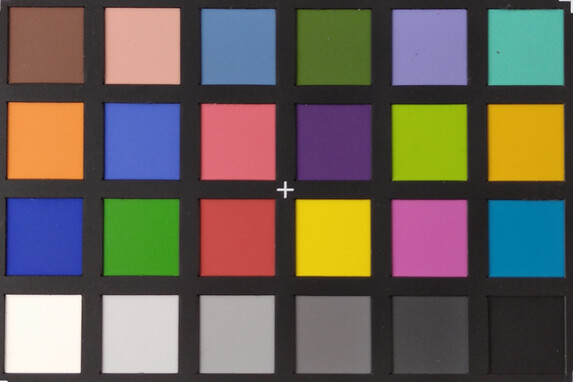
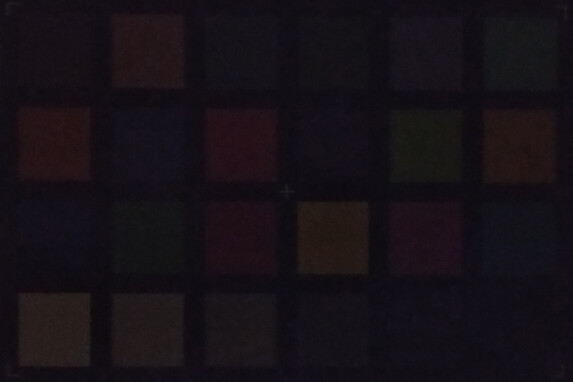
Accessories & Warranty - Xiaomi includes a case with the Redmi 8
The Redmi 8 comes with a 10 W modular charger, a corresponding USB Type-C cable, a SIM tool, and a silicone case.
The device also has 12 months manufacturer's warranty from the date of purchase. 24 months' warranty will apply in regions like the EU, though. Please see our Guarantees, Return Policies & Warranties FAQ for country-specific information.
Input Devices & Operation - Redmi 8 with face unlock
MIUI 11 offers onscreen buttons for navigating the Redmi 8 by default, but the OS also offers gesture control should you prefer to use that. The capacitive touchscreen in our review unit is very sensitive and responds precisely right into the corners of the display. The glass top-layer has a pleasant finish to it too that is conducive to gliding one's finger across its surface.
The Redmi 8 also has a fingerprint scanner, which Xiaomi has placed on the back of the device. The sensor is not that fast though, as is expected from an entry-level smartphone. However, the sensor unlocks the device reliably and is much faster than those in devices like the Nokia 4.2. The Redmi 8 supports facial authentication too, although only using its front-facing camera. While not as secure as the fingerprint scanner, it recognised our face quickly and accurately.
Display - Only an HD IPS panel on the Redmi 8
The Redmi 8 has a 6.22-inch IPS LC display in a 19:9 aspect ratio, which natively operates at a resolution of 1520x720. The panel has a pixel density of 270 PPI, which is good enough for everyday usage even if it is not that sharp.
The display is comparatively bright, though. Our review unit achieved a maximum brightness of 554 cd/m² on a pure white background at the centre of the display, which is a very good value in view of the competition. Incidentally, APL50, a more realistic test that measures luminosity by evenly distributing light and dark areas across displays, recorded a peak brightness of 528 cd/m². It should be noted that this only applies when the display is set to automatic brightness. Switching to manual brightness causes the display's peak luminosity to drop to 452 cd/m².
| |||||||||||||||||||||||||
Brightness Distribution: 85 %
Center on Battery: 554 cd/m²
Contrast: 2308:1 (Black: 0.24 cd/m²)
ΔE ColorChecker Calman: 2.6 | ∀{0.5-29.43 Ø4.78}
ΔE Greyscale Calman: 2.7 | ∀{0.09-98 Ø5}
95.7% sRGB (Calman 2D)
Gamma: 2.17
CCT: 6814 K
| Xiaomi Redmi 8 IPS LCD, 1520x720, 6.2" | Xiaomi Redmi 8A IPS, 1520x720, 6.2" | Nokia 4.2 IPS, 1520x720, 5.7" | Samsung Galaxy A20e IPS, 1560x720, 5.8" | LG K50 IPS, 1520x720, 6.3" | Wiko View 3 IPS, 1520x720, 6.3" | |
|---|---|---|---|---|---|---|
| Screen | -47% | -54% | -82% | -45% | -28% | |
| Brightness middle (cd/m²) | 554 | 441 -20% | 445 -20% | 475 -14% | 489 -12% | 574 4% |
| Brightness (cd/m²) | 516 | 421 -18% | 424 -18% | 473 -8% | 453 -12% | 552 7% |
| Brightness Distribution (%) | 85 | 89 5% | 91 7% | 93 9% | 85 0% | 91 7% |
| Black Level * (cd/m²) | 0.24 | 0.38 -58% | 0.26 -8% | 0.35 -46% | 0.42 -75% | 0.19 21% |
| Contrast (:1) | 2308 | 1161 -50% | 1712 -26% | 1357 -41% | 1164 -50% | 3021 31% |
| Colorchecker dE 2000 * | 2.6 | 4.46 -72% | 5.9 -127% | 6.8 -162% | 4.75 -83% | 5.5 -112% |
| Colorchecker dE 2000 max. * | 4.9 | 8.01 -63% | 9.3 -90% | 13.4 -173% | 7.75 -58% | 9.5 -94% |
| Greyscale dE 2000 * | 2.7 | 5.4 -100% | 6.8 -152% | 8.7 -222% | 4.6 -70% | 5 -85% |
| Gamma | 2.17 101% | 2.146 103% | 2.2 100% | 2.33 94% | 2.164 102% | 2.1 105% |
| CCT | 6814 95% | 7901 82% | 8443 77% | 9385 69% | 7510 87% | 7610 85% |
* ... smaller is better
Screen Flickering / PWM (Pulse-Width Modulation)
| Screen flickering / PWM not detected | |||
In comparison: 53 % of all tested devices do not use PWM to dim the display. If PWM was detected, an average of 8101 (minimum: 5 - maximum: 343500) Hz was measured. | |||
The IPS panel also achieved a very good black value of 0.24 cd/m² in our tests. Accordingly, the panel has a high contrast ratio, which we measured at 2,308:1. APL50 reflected these values, too.
We also used a photo spectrometer and CalMAN software to assess the display's colour accuracy. These recorded a colour deviation from DeltaE reference colours of 2.6 and a greyscale deviation of 2.9. These are comparatively low for a device at this price, while its colour temperature of 6,814 K is close to our ideal of 6,500 K.
Display Response Times
| ↔ Response Time Black to White | ||
|---|---|---|
| 41.6 ms ... rise ↗ and fall ↘ combined | ↗ 22.8 ms rise | |
| ↘ 18.8 ms fall | ||
| The screen shows slow response rates in our tests and will be unsatisfactory for gamers. In comparison, all tested devices range from 0.1 (minimum) to 240 (maximum) ms. » 98 % of all devices are better. This means that the measured response time is worse than the average of all tested devices (20.2 ms). | ||
| ↔ Response Time 50% Grey to 80% Grey | ||
| 68.8 ms ... rise ↗ and fall ↘ combined | ↗ 33.2 ms rise | |
| ↘ 35.6 ms fall | ||
| The screen shows slow response rates in our tests and will be unsatisfactory for gamers. In comparison, all tested devices range from 0.165 (minimum) to 636 (maximum) ms. » 98 % of all devices are better. This means that the measured response time is worse than the average of all tested devices (31.6 ms). | ||
The Redmi 8 leaves a satisfactory impression outdoors, too. Its bright and contrast-rich panel ensures that content remains readable even outdoors in wintry conditions, but reflections from direct sunlight during the summer will likely obscure the display somewhat.
Performance - Qualcomm Snapdragon 439 with 4 GB RAM
Daily apps like Facebook or Twitter are no problem for the Snapdragon 439 in the Redmi 8. The 2018 Qualcomm SoC has eight Cortex-A53 cores that can clock up to 1.95 GHz. The SoC also integrates a Qualcomm Adreno 505 GPU, which supports modern APIs like Vulkan, OpenGL ES 3.1, OpenCL 2.0 and Direct3D 12.
The UI does not, despite the display's low pixel density, always run smoothly. The device's limited performance shows when multitasking and loading games, with long waiting times being the rule here.
In synthetic benchmarks, the Qualcomm chipset and 4 GB of RAM match our Android comparison devices, although the Exynos 7884 in the Samsung Galaxy A20e proves to be slightly more powerful than the Snapdragon 439. Meanwhile, the Adreno 505 is more or less on par with the competition in GPU benchmarks, although this only includes the ARM Mali-G71 MP2 and the PowerVR GE8320.
| PCMark for Android | |
| Work performance score (sort by value) | |
| Xiaomi Redmi 8 | |
| Xiaomi Redmi 8A | |
| Nokia 4.2 | |
| Samsung Galaxy A20e | |
| LG K50 | |
| Wiko View 3 | |
| Average Qualcomm Snapdragon 439 (5880 - 6228, n=6) | |
| Work 2.0 performance score (sort by value) | |
| Xiaomi Redmi 8 | |
| Xiaomi Redmi 8A | |
| Nokia 4.2 | |
| Samsung Galaxy A20e | |
| LG K50 | |
| Wiko View 3 | |
| Average Qualcomm Snapdragon 439 (4412 - 4791, n=6) | |
| GFXBench 3.1 | |
| on screen Manhattan ES 3.1 Onscreen (sort by value) | |
| Xiaomi Redmi 8 | |
| Xiaomi Redmi 8A | |
| Nokia 4.2 | |
| Samsung Galaxy A20e | |
| LG K50 | |
| Wiko View 3 | |
| Average Qualcomm Snapdragon 439 (6 - 14, n=6) | |
| Average of class Smartphone (11 - 166, n=157, last 2 years) | |
| 1920x1080 Manhattan ES 3.1 Offscreen (sort by value) | |
| Xiaomi Redmi 8 | |
| Xiaomi Redmi 8A | |
| Nokia 4.2 | |
| Samsung Galaxy A20e | |
| LG K50 | |
| Wiko View 3 | |
| Average Qualcomm Snapdragon 439 (6.4 - 6.6, n=6) | |
| Average of class Smartphone (8.4 - 413, n=156, last 2 years) | |
Browser benchmarks show a similar picture to those of the synthetic CPU and GPU benchmarks, insofar as the Redmi 8 falls short of the Galaxy A20e. Our review unit loads websites slowly too, while scrolling does not always remain smooth when the system is rendering complex content. Overall, the Redmi 8 offers a "normal" surfing experience for a smartphone at this price.
| Jetstream 2 - 2.0 Total Score | |
| Average of class Smartphone (23.8 - 387, n=149, last 2 years) | |
| Samsung Galaxy A20e (Chrome 72.0.3626.121) | |
| Xiaomi Redmi 8 (Chrome 79) | |
| Average Qualcomm Snapdragon 439 (15.9 - 16.9, n=5) | |
| Xiaomi Redmi 8A (Chrome 78) | |
| Nokia 4.2 (Chrome 74) | |
| Wiko View 3 (Chrome 75) | |
| JetStream 1.1 - Total Score | |
| Samsung Galaxy A20e (Chrome 72.0.3626.121) | |
| Nokia 4.2 (Chrome 74) | |
| Average Qualcomm Snapdragon 439 (25.3 - 27.1, n=6) | |
| Xiaomi Redmi 8 (Chrome 79) | |
| Xiaomi Redmi 8A (Chrome 78) | |
| LG K50 (Chrome 77) | |
| Speedometer 2.0 - Result 2.0 | |
| Average of class Smartphone (15.2 - 643, n=122, last 2 years) | |
| Samsung Galaxy A20e (Chrome 72.0.3626.121) | |
| Nokia 4.2 (Chrome 74) | |
| Average Qualcomm Snapdragon 439 (17.4 - 18.5, n=5) | |
| Xiaomi Redmi 8A (Chrome 78) | |
| Xiaomi Redmi 8 (Chrome 79) | |
| WebXPRT 3 - Overall | |
| Average of class Smartphone (38 - 380, n=31, last 2 years) | |
| Samsung Galaxy A20e (Chrome 72.0.3626.121) | |
| Nokia 4.2 (Chrome 74) | |
| Average Qualcomm Snapdragon 439 (32 - 38, n=6) | |
| Xiaomi Redmi 8 (Chrome 79) | |
| Xiaomi Redmi 8A (Chrome 78) | |
| LG K50 (Chrome 77) | |
| Octane V2 - Total Score | |
| Average of class Smartphone (2228 - 121337, n=197, last 2 years) | |
| Samsung Galaxy A20e (Chrome 72.0.3626.121) | |
| Nokia 4.2 (Chrome 74) | |
| Average Qualcomm Snapdragon 439 (4512 - 4958, n=6) | |
| Xiaomi Redmi 8 (Chrome 79) | |
| Xiaomi Redmi 8A (Chrome 78) | |
| LG K50 (Chrome 77) | |
| Wiko View 3 (Chrome 75) | |
| Mozilla Kraken 1.1 - Total | |
| LG K50 (Chrome 77) | |
| Wiko View 3 (Chrome 75) | |
| Xiaomi Redmi 8A (Chrome 78) | |
| Xiaomi Redmi 8 (Chrome 79) | |
| Average Qualcomm Snapdragon 439 (9768 - 10143, n=6) | |
| Nokia 4.2 (Chrome 74) | |
| Samsung Galaxy A20e (Chrome 72.0.3626.121) | |
| Average of class Smartphone (257 - 28190, n=154, last 2 years) | |
* ... smaller is better
The device's internal eMMC storage is on par with our comparison devices. While its sequential transfer speeds and 4 KB random read speeds are better than most of its competitors, the device struggles with 4 KB write speeds, for some reason. The device has a satisfactorily fast microSD card reader too, which we tested with our Toshiba Exceria Pro M501 reference card.
| Xiaomi Redmi 8 | Xiaomi Redmi 8A | Nokia 4.2 | Samsung Galaxy A20e | LG K50 | Wiko View 3 | Average 64 GB eMMC Flash | Average of class Smartphone | |
|---|---|---|---|---|---|---|---|---|
| AndroBench 3-5 | 9% | -38% | 5% | -9% | -8% | 51% | 1574% | |
| Sequential Read 256KB (MB/s) | 285.7 | 282 -1% | 220.4 -23% | 300.4 5% | 263.4 -8% | 287.3 1% | 277 ? -3% | 2228 ? 680% |
| Sequential Write 256KB (MB/s) | 202.6 | 106.4 -47% | 18.17 -91% | 103.6 -49% | 78.9 -61% | 132.4 -35% | 178.4 ? -12% | 1852 ? 814% |
| Random Read 4KB (MB/s) | 79 | 73.1 -7% | 17.51 -78% | 79.8 1% | 52.1 -34% | 55.2 -30% | 60.7 ? -23% | 296 ? 275% |
| Random Write 4KB (MB/s) | 7.33 | 15.8 116% | 4.31 -41% | 13.18 80% | 12.03 64% | 8.98 23% | 33.8 ? 361% | 339 ? 4525% |
| Sequential Read 256KB SDCard (MB/s) | 86.9 ? | 84.9 ? -2% | 86.7 ? 0% | 79.2 ? -9% | 78.9 ? -9% | 81.7 ? -6% | 77.4 ? -11% | |
| Sequential Write 256KB SDCard (MB/s) | 63.6 ? | 61.7 ? -3% | 65.9 ? 4% | 64.3 ? 1% | 58.9 ? -7% | 63.6 ? 0% | 58.3 ? -8% |
Games - The Qualcomm Adreno 505 has its limits
All sensors worked perfectly during our gaming tests, as did the touchscreen. The Adreno 505 is only powerful enough to play demanding games like Asphalt 9: Legends at low details, though. Even then, our review unit occasionally dropped to a low of 20 FPS at these settings, albeit it averaged 28.8 FPS. PUBG Mobile also only averages 23.9 FPS on Balanced and 24.8 FPS on smooth, which we determined using the GameBench app.
PUBG Mobile
Asphalt 9: Legends
Emissions - A cool customer
Temperature
The rear plastic housing of the Redmi 8 remains rather cool even under sustained load. In short, waste heat will not pose a problem in daily use.
We also subjected our review unit to a looped set of GFXBench battery tests, which we left running for at least 30 run-throughs. During this time, we measured any SoC temperature changes, along with battery status and frame rates.
While the Redmi 8 handled the older T-Rex test with ease, it throttled marginally in the more complex Manhattan benchmark, which GFXBench bases on OpenGL ES 3.1. Frame-rate fluctuations remain at around 1% though, so you should not notice any performance issues in daily use.
(+) The maximum temperature on the upper side is 30.7 °C / 87 F, compared to the average of 35.2 °C / 95 F, ranging from 21.9 to 247 °C for the class Smartphone.
(+) The bottom heats up to a maximum of 29.5 °C / 85 F, compared to the average of 34 °C / 93 F
(+) In idle usage, the average temperature for the upper side is 27.2 °C / 81 F, compared to the device average of 32.9 °C / 91 F.
Speakers
Lovers of wired headphones can look forward to clean-sounding audio thanks to the Redmi 8's 3.5 mm jack. The device supports Bluetooth audio output too and utilises codecs like AAC among others.
The Redmi 8 has a mono speaker, which achieved a maximum volume of almost 89 dB(A) during our tests. The speaker sounds slightly better to our ears than the one that Xiaomi included in the Redmi 8A, and while it reproduces an array of frequencies linearly, mids dominate somewhat. The pink noise diagram to the right also shows that the speaker reproduces hardly any bass frequencies.
Xiaomi Redmi 8 audio analysis
(+) | speakers can play relatively loud (88.6 dB)
Bass 100 - 315 Hz
(-) | nearly no bass - on average 36.7% lower than median
(±) | linearity of bass is average (10.4% delta to prev. frequency)
Mids 400 - 2000 Hz
(±) | reduced mids - on average 5.6% lower than median
(+) | mids are linear (5.2% delta to prev. frequency)
Highs 2 - 16 kHz
(+) | balanced highs - only 1.5% away from median
(+) | highs are linear (1.9% delta to prev. frequency)
Overall 100 - 16.000 Hz
(±) | linearity of overall sound is average (20.1% difference to median)
Compared to same class
» 32% of all tested devices in this class were better, 9% similar, 59% worse
» The best had a delta of 11%, average was 35%, worst was 134%
Compared to all devices tested
» 51% of all tested devices were better, 8% similar, 41% worse
» The best had a delta of 4%, average was 24%, worst was 134%
Samsung Galaxy A20e audio analysis
(±) | speaker loudness is average but good (81.6 dB)
Bass 100 - 315 Hz
(-) | nearly no bass - on average 27.1% lower than median
(±) | linearity of bass is average (9.4% delta to prev. frequency)
Mids 400 - 2000 Hz
(±) | reduced mids - on average 5.8% lower than median
(+) | mids are linear (5.4% delta to prev. frequency)
Highs 2 - 16 kHz
(±) | higher highs - on average 5.7% higher than median
(+) | highs are linear (2.5% delta to prev. frequency)
Overall 100 - 16.000 Hz
(±) | linearity of overall sound is average (24% difference to median)
Compared to same class
» 55% of all tested devices in this class were better, 8% similar, 37% worse
» The best had a delta of 11%, average was 35%, worst was 134%
Compared to all devices tested
» 71% of all tested devices were better, 6% similar, 22% worse
» The best had a delta of 4%, average was 24%, worst was 134%
Power Management - A 5,000 mAh strong battery and great runtimes
Power Consumption
Although Xiaomi claims that the Redmi 8 supports 18 W fast charging, the company only includes a 10 W charger in the box. Our review unit takes about 3 hours to recharge fully, for reference. Nonetheless, the Redmi 8 has inconspicuous power consumption and is generally more efficient than the Redmi 8A.
| Off / Standby | |
| Idle | |
| Load |
|
Key:
min: | |
| Xiaomi Redmi 8 5000 mAh | Xiaomi Redmi 8A 5000 mAh | Nokia 4.2 3000 mAh | Samsung Galaxy A20e 3000 mAh | LG K50 3500 mAh | Wiko View 3 4000 mAh | Average Qualcomm Snapdragon 439 | Average of class Smartphone | |
|---|---|---|---|---|---|---|---|---|
| Power Consumption | -41% | -15% | 1% | 4% | 4% | -36% | -73% | |
| Idle Minimum * (Watt) | 0.57 | 0.9 -58% | 0.74 -30% | 0.66 -16% | 0.7 -23% | 0.67 -18% | 0.82 ? -44% | 0.842 ? -48% |
| Idle Average * (Watt) | 1.8 | 1.8 -0% | 1.9 -6% | 1.63 9% | 1 44% | 1.73 4% | 2.21 ? -23% | 1.439 ? 20% |
| Idle Maximum * (Watt) | 1.82 | 2.4 -32% | 2.21 -21% | 1.67 8% | 1.8 1% | 1.79 2% | 2.49 ? -37% | 1.624 ? 11% |
| Load Average * (Watt) | 2.57 | 4.3 -67% | 3.04 -18% | 2.77 -8% | 2.4 7% | 2.18 15% | 3.78 ? -47% | 7.03 ? -174% |
| Load Maximum * (Watt) | 4.12 | 6 -46% | 4.15 -1% | 3.66 11% | 4.5 -9% | 3.43 17% | 5.24 ? -27% | 11.3 ? -174% |
* ... smaller is better
Battery Life
Thanks to energy-saving hardware and a huge 5,000 mAh battery, the Redmi 8 can outlast its competitors. In our Wi-Fi battery test, which we conducted by adjusting the display to approximately 150 cd/m², our review unit lasted an impressive 19:17 hours. The Redmi 8 managed a strong runtime of 5:08 hours even under load. However, the device does not appear to be as well optimised as the Redmi 8A is. While the Redmi 8 has significantly lower power consumption, the Redmi 8A lasted much longer in our H.264 looped video and sustained load tests. Overall, the Redmi 8A edged the Redmi 8 too.
| Xiaomi Redmi 8 5000 mAh | Xiaomi Redmi 8A 5000 mAh | Nokia 4.2 3000 mAh | Samsung Galaxy A20e 3000 mAh | LG K50 3500 mAh | Wiko View 3 4000 mAh | |
|---|---|---|---|---|---|---|
| Battery runtime | 11% | -40% | -26% | -29% | -14% | |
| Reader / Idle (h) | 42 | 31.7 -25% | 23.9 -43% | |||
| H.264 (h) | 13.3 | 19.9 50% | 12.6 -5% | |||
| WiFi v1.3 (h) | 19.3 | 19.1 -1% | 11.6 -40% | 11.9 -38% | 13.7 -29% | 16.6 -14% |
| Load (h) | 5.1 | 6.1 20% | 4.2 -18% |
Pros
Cons
Verdict - The Xiaomi Redmi 8 sets new standards for budget smartphones
The Redmi 8, which is very similar to the Redmi 8A on paper, is a significant upgrade over its sibling, even if they look almost identical. The former not only has improved cameras and a better loudspeaker, but it has better connectivity and a noticeably improved display too. Overall, while we recommended the cheaper Redmi 8A when we reviewed it, the Redmi 8 offers even better value for the money. In short, Xiaomi's latest budget Redmi smartphone sets new standards for sub-120-Euro (~$133) smartphones, primarily because it has no serious weaknesses.
Nevertheless, Xiaomi has made some compromises, which is unsurprising considering the device's low MSRP. The Redmi 8 is, and remains, an entry-level smartphone. Accordingly, Xiaomi has equipped the device with a weak SoC, a low-resolution display, eMMC flash storage and a slow Wi-Fi module. At just 30 Euros (~$33) more, the Redmi Note 8 is a worthwhile alternative to the Redmi 8, as it offers noticeably better performance at hardly any greater outlay.
The Xiaomi Redmi 8 offers more than most sub-120-Euro (~$133) smartphones do. If price is the limiting factor for your next smartphone, then the Redmi 8 would be a good option.
Xiaomi Redmi 8
- 01/20/2020 v7 (old)
Marcus Herbrich







